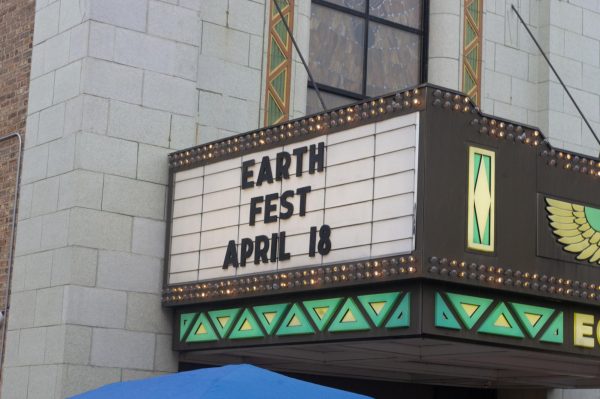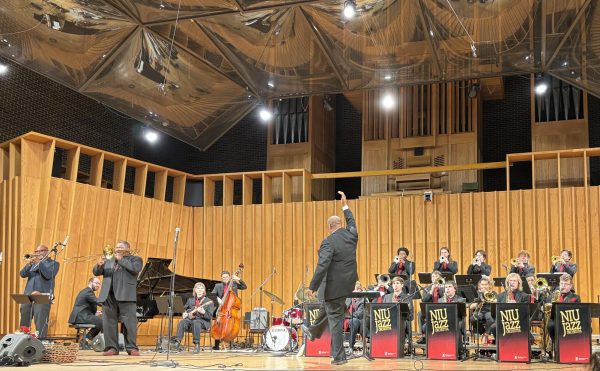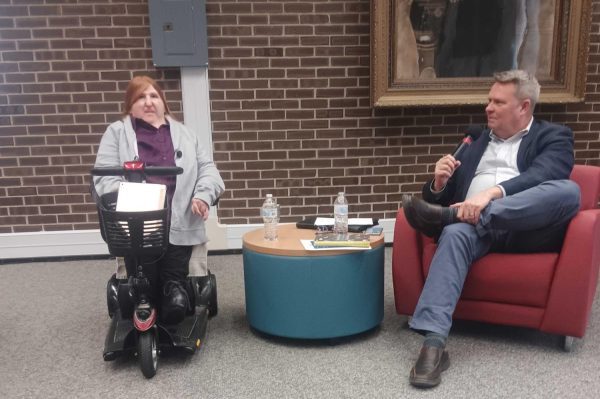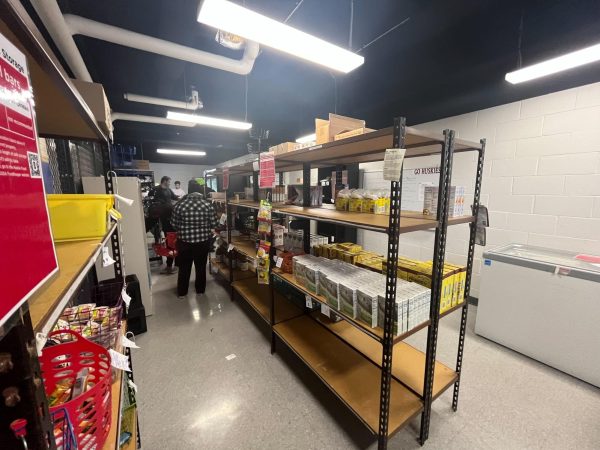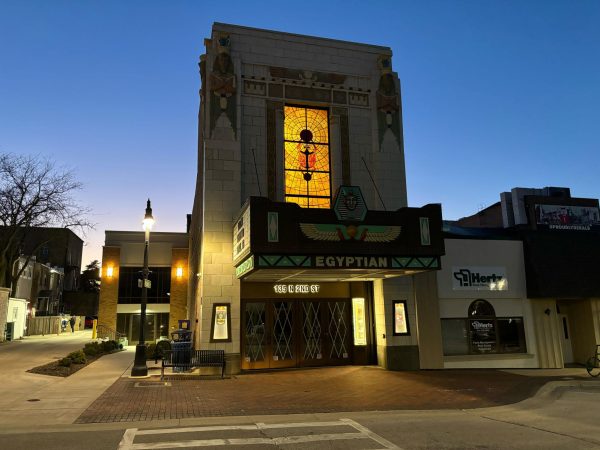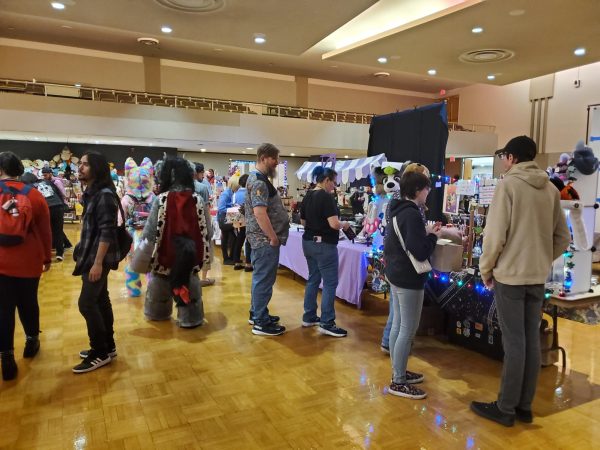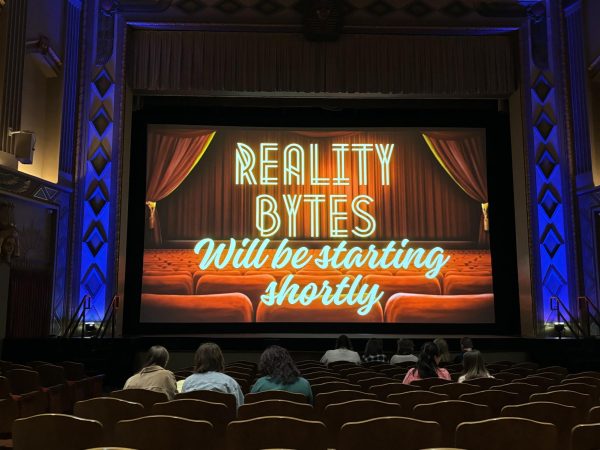A house of a different color
October 6, 2006
A doorway at 132 Harrison St. is like a portal to another place.
From the outside, the unassuming, two-story house looks like the other dozen or so 1920s-era homes on the street. There’s nothing spectacular about the screen door that hangs slightly downhill off its hinge, nor is there anything intriguing about the small front yard or the uneven driveway.
And even when one first enters — through the side to a large room that connects the kitchen, dining room, stairway and living room into one central hub — the house is still rather unimpressive. It feels like hundreds of other homes in hundreds of other towns
It has mismatched furniture from each roommate. The fridge is seemingly divided into “yours, mine, ours.” There are a few dishes left on the counter, but no one is quite sure to whom they belong. Video games and DVD boxes are scattered next to magazines and playing cards.
For the most part it’s a faceless college home.
That is, until those faces start to show up. A painter, a photographer, a few musicians, and a concert promoter sit among a philosopher, a psychologist and an engineer. This is where 132 Harrison St. becomes another type of place.
The side entrance isn’t like Lewis Carroll’s looking-glass. If anything it’s like the entrance to Andy Warhol’s Factory — a place for free thinkers and artistic minds to feed off each other, to live, to create and to just chill the heck out with like-minded individuals
This is when 132 Harrison St. shows its true colors — purple.
The Purple House, as it has become named, has been in its current state since spring 2002. This was when Joe Robinson, then a freshman psychology student, convinced his parents to buy the property so he and some friends would have a place to live come August.
“I didn’t get the idea it was going to be ‘famous,'” said Robinson. “It was just a group of friends.”
But that group of friends began to grow, as many groups do. And soon the artists living in the house — which at the time included several musicians besides Robinson — began to put on concerts in the basement. The in-house performances often were comprised of the residents, and attracted a growing crowd each time. After a while, those concerts became art shows, or theme parties, pot-luck dinners, movie screenings and even more concerts. It didn’t matter what venture one of the roommates tried, there was an audience and a supporting cast.
“It started with just some friends. But they make another friend, who makes another friend, who makes another friend,” said Robinson. “It’s like four degrees of friendship, and pretty soon it’s like ‘who the hell is this guy in my house?’ But it’s really it’s just a friend of a friend.”
Before long, the term “Purple House” became synonymous with just about anything a bit underground or slightly creatively offbeat. It had grown into a noun (“We’re going to the Purple House”) and an adjective (“That band is so Purple House”). It was — is — the type of place one can’t avoid in DeKalb.
“I remember one time there was a showcase for [local record label] Scratch and Sniff Records,” said Ben Grigg, senior mechanical engineering major and current Purple House resident. “The show was in the garage and I think they were having a garage sale, too.”
Its name stems from the house’s color when the Robinsons purchased it. Today, only the offset garage near the back of the property dawns the Barney purple. The house has since been covered by a gray/blue that causes confusion about the name. At a gathering last spring a girl remarked, “I have no idea why this place is called The Purple House.” The color alteration was just one of the many updates Robinson oversaw on Harrison St. Now a second year graduate student at the University of Wisconsin, he and his former roommates lived through the property’s overhaul that saw a new roof, new pipes and almost entirely new wiring… in addition to the famous new coat of paint.
Though the house hasn’t been purple since June 2004, the name stuck.
It’s stuck to more than 30 different rent-paying tenants since August 2002. It’s stuck with the various musicians that have either played or stayed at the house (including former Braid and Hey Mercedes front man Bob Nanna, rock’n’roll icon and K Records founder Calvin Johnson and Baltimore band Spouse). And most importantly, it’s stuck with the artists of DeKalb.
“It does have something to do with DeKalb,” said Robinson. “It’s part of the subculture here.”
Now The Purple House is tamer than in other years. The building has never been a riotous party pad, nor a venue for loud bass-thumping music. All night rages are a bit uncharacteristic for a home with three pianos, framed posters of Bjork and bookshelves that sport as much classic fiction as import-only bootleg DVDs of foreign art films.
But it does have a sense of reservation about it. Many of its original patrons have moved away — some as far as Oregon and France. Some, however, are still in town. They’ve moved out of 132 Harrison St. but their legacy remains.
That’s not just metaphorically. The house’s current roommates set up a Myspace profile for the residence, and many are still close with those who occupied the home before them.
“I know when we first moved in, some of the old school Purple House kids gave us some sideways glances,” said Grigg. “They were like ‘who are these guys’ or ‘what are they doing?’ But we’ve done a good job of holding the [reputation] up.”
Oddly, another “Purple House” — a similar artist house in Colorado — found its DeKalb counterpart on the popular networking Web site. The two houses are now “friends.” (www.mypsace.com/ThePurpleHouse and www.myspace.com/ThePurpleHouseDenver respectively).
And even if the days of weekend art shows and marathon basement concerts are growing fewer and further apart, 132 Harrison St.’s reputation is undeniable. Just look around.
Or rather, just go inside.
Derek Wright is the Flavor Editor for the Northern Star.


